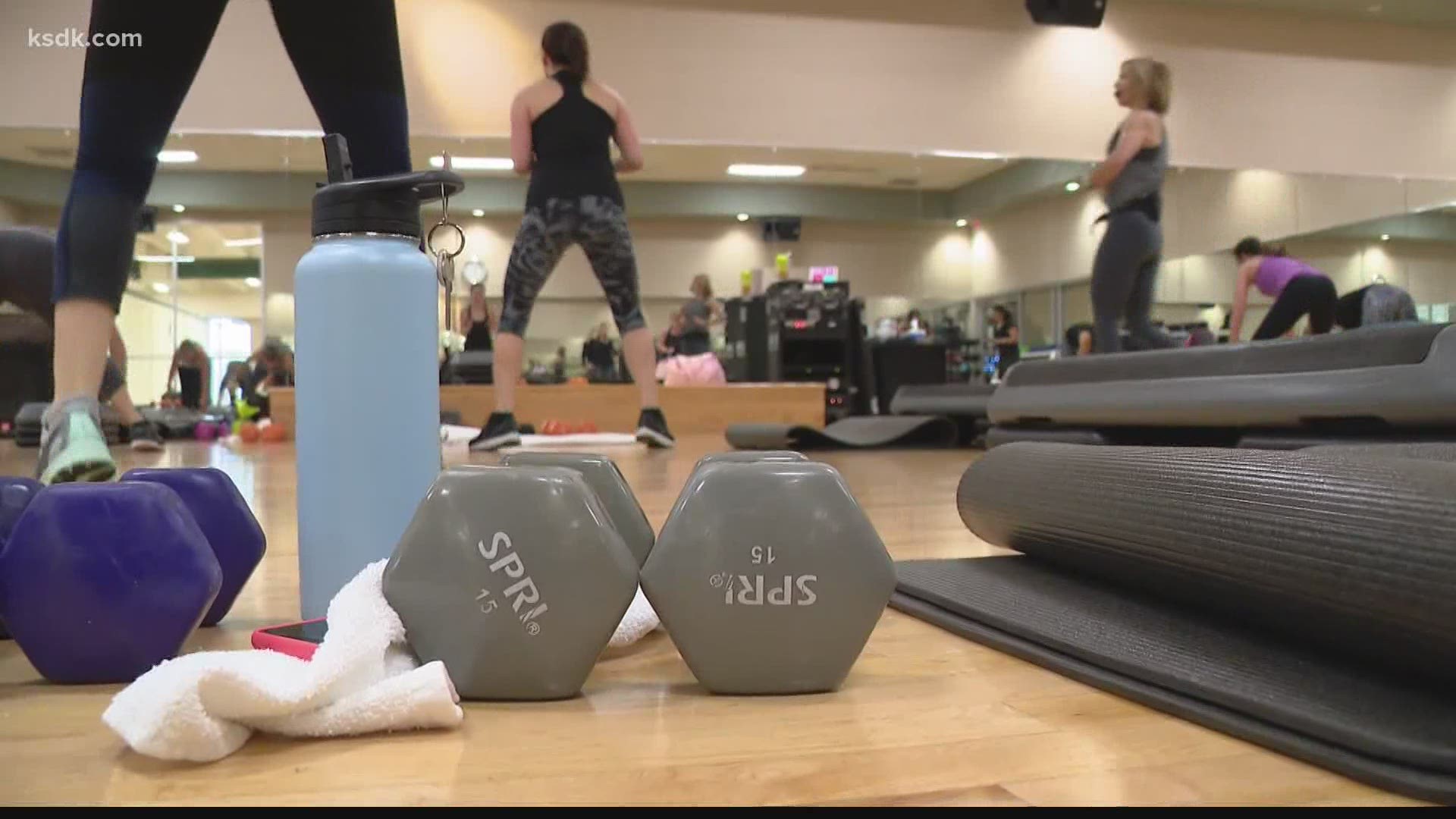ST. LOUIS COUNTY, Mo. — Guidelines for summer camps to reopen in St. Louis County have been released.
Camps will be able to reopen on June 1.
Some of the new guidelines include social distancing guidelines, cleaning requirements and not conducting large group activities. Parents should not exit their cars when they drop the kids off at camps, but Page said parents can open the car doors to let their child in or out.
“As we continue to move forward to open up some more businesses in St. Louis County in a slow and cautious way, we will continue to ensure that public safety is our top priority,” Page said.
Page said the county has set June 15 as a target date for pools, youth and adult athletics with no fans and gyms.
“Gyms remain a high-risk concern because of inability to wear masks due to limits on breathing,” Page said.
“While June 15 remains a target, we will continue to watch the trends of testing, hospital admissions as we continue consider more openings in St. Louis County,” he said.
Page said his staff met with some gym and fitness owners on Wednesday. He also said he was able to attend the meeting for a short time.
He also said that the gym and fitness owners have made it clear that they’re working on a business model that would allow them to protect the health and safety of their employees and customers.
Page also announced the county is distributing more than 250,000 masks.
Page’s office said there will not be a briefing on Memorial Day. The county executive has been holding briefings every Monday, Wednesday and Friday since the pandemic began.
As of May 21, there are 4,472 confirmed cases of the coronavirus in St. Louis County and 365 people have died due to complications from the virus.
- Maximize activities promoting natural social distancing, such as parallel play or competition; individual projects; physical activities with no shared equipment, like foot races, hiking, treasure hunts, etc.
- Maximize outdoor activities over indoor activities. While summer camps, similar to day care and childcare centers, do not need to abide by occupancy limits, they do need to abide by social distancing requirements and disinfection processes.
- Family meet and greets should be conducted virtually
- Parents/Guardians will drop off & pick up children at the main entry and will not allowed in the camp area or if the camp provides curbside pick up or drop off parents/guardians will remain in the car, and staff will open the car door to receive the child
- Staff will escort children upon pick up to wash hands and deliver the child to their assigned group and counselor for the week
- Large group activities will not be conducted
- Field trips will not occur; camps can utilize guest speakers (who are also wellness checked) and virtual field trips
- Staff training may be done in small groups and on-line virtual to limit exposure
- Follow pool use guidance for aquatic activities
- Follow sports guidance for sports
- Consider a dry run to test procedures before using on full camp attendance
- Children with compromised immune systems or other conditions that make them more vulnerable to infections or to complications from COVID-19 should be discouraged from attending camp.
- Reinforce concepts around hand and respiratory hygiene for both staff and children, such as covering your cough, washing your hands regularly, and keeping your hands away from your face and mouth.
- Staff should wear cloth masks when social distancing from children is difficult or impossible, or when they are engaged in activities causing exertion or wetting of the mask. Masks should be laundered daily. Alternatively, for children with certain types of special needs, transparent masks can be used. These can be the subject of PPE sparing measures just like any other disposable masks.
- Use developmental stage and practical considerations when asking children to wear masks: will the mask be a potential source of hazard? Will children wear the mask consistently for the time required without touching the mask or their face?
- Room size will accommodate no more than assigned ratio of sq. ft. assigned based on the social distancing guidelines
- Minimize the amount of time standing in line
- Activities requiring table work require social distancing within the table groups is required
- Pre-prep arts & crafts activities by individual bags, containers etc. for children to easily pick up limiting cross contamination
- Cleaning routine checklist for summer camp staff as well as facility staff will be followed
- Separate children into smaller groups with dedicated staff.
- Toys and equipment should not be shared between groups until the toys and equipment can be washed and sanitized; washable cloth material needs to be washed on highest safe temperature every day after use and between groups. Ideally each child should have their own supplies for drawing, etc.
- As groups travel from rooms and playgrounds, travel should be scheduled so that groups do not interact or pass each other as they travel.
- Plan for substitutes and do not share substitutes between groups
- Use visual markers for social distancing, such as markings on the floor, spacing out desks, etc.
- Provide frequent opportunities every day, in addition to before and after meal-time and after bathroom trips, for hand-washing or hand sanitizing for staff and children.
- Ensure adequate supply of soap, hand sanitizer 70% alcohol or higher (when safe for children, depending on age or other developmental factors)
- Masks and gloves should be worn by staff when diapering or helping with toileting.
- Have full PPEs on hand if someone (staff or child) becomes symptomatic while at Camp. Designate a space for isolation until the staff or child can leave the premises.
- Ensure children wash hands prior to eating and prior to engaging in other activities after eating.
- All surfaces will be disinfected prior to meals and immediately after meals
- Have lunch and snack time in group’s own space, avoiding communal eating areas, such as a cafeteria.
- Serve individually wrapped or packaged food and drinks instead of buffet or family style meals. Do not share or re-serve unopened food or drink that has been previously served.
- Use individual packets of condiments instead of shared shakers and bottles. Do not share or re-use unopened packets. Discard any unopened packets that have been previously served.
- Gloves should be worn when handling used utensils and removing trash bags.
- Self-serve drink stations and communal pitchers/containers should not be used.
- Kitchen surfaces, especially hand sinks, handles, prep stations, and door knobs need to be wiped down with disinfectant or EPA approved sanitizer before food preparation begins and at least every hour if meal service is ongoing. Kitchen staff must utilize fabric or disposable masks while preparing food.
- Disposable food trays, plates, cups and utensils should be used if possible. If glass and silverware are used, FDA-approved washing, rinsing and sanitizing standards must be met. Diligent care should be taken to ensure sanitizer concentration and water temperature requirements are strictly followed for dish washing. Dish machine sanitizing mechanisms and 3 compartment sink sanitizing solution should be closely monitored and chemical concentration/temperature tested using the appropriate test kit or temperature measuring device regularly. Hands should be washed after handling soiled dishes and before handling clean dishes.
- Cups, lids, napkins and straws should be handed directly to children by staff as opposed to self-service.
- All kitchen staff must wear the following protective equipment while preparing food and/or handling clean kitchen equipment and utensils:
- Disposable food-grade gloves
- Hairnet, hat, or other hair restraints
- Face covering (fabric or disposable masks)
- Please review these recommendations concerning the proper use of protective equipment prepared by the World Central Kitchen.
- Staff should change their face covering if it becomes soiled, torn or wet.
- Wash/sanitize hands after changing masks and before putting on a new pair of gloves.
- Change gloves when switching tasks, handling different foods, or after touching objects that should be considered contaminated (cell phone, computer, clothes, door handles, etc.)
- If the integrity of a glove is compromised (e.g. ripped, punctured) change gloves immediately - wash hands per proper protocols
- Daily symptom checks for staff and children with contactless thermometer. Non-punitive leave policy for staff and children; consider refunding days when children cannot attend due to illness, which will encourage parents to comply. Parents should be educated not to bring sick children to camp, and keep children home until they are symptom free.
- Encourage parents to change children’s clothes and bathe them as soon as they get home from camp. Children should wear freshly laundered clothes every day for camp. Children should get proper nutrition at home and at camp, as well as developmentally appropriate amount of sleep.
- If a child or a staff member tests positive within a group, DPH may advise that the group of children and other associated staff are to refrain from attending camp for a duration of two weeks as part of regular quarantine requirements, or DPH may advise that the entire camp close if necessary. Inform parents of this policy before they sign up.
- Contact your HVAC maintenance provider to increase air exchanges per hour if possible
- Increasing introduction and circulation of outdoor air as much as possible by opening windows and doors
- Intensify daily cleaning and sanitizing/disinfecting by janitorial staff with EPA-approved disinfectants for COVID-19. Be sure to follow manufacturer’s instructions for the product to work properly, including contact time and shelf life after product is diluted. Beware of products which can be toxic for children if item is to be used shortly after sanitizing or disinfection.
- Clean, then disinfect or sanitize. Using only a sanitizing agent or disinfectant on visibly soiled surfaces will not work; they must be cleaned first, then sanitized
- Launder and use dishwasher on sanitizing cycle or hottest cycle safe for item.
- COVID-19 children or staff cannot come back to a camp or program until released from isolation or quarantine by St Louis County Department of Health if they are a St Louis County resident. If the child or staff are not a resident of St. Louis County, the local health department of the resident’s county will release them from isolation or quarantine.
- Different groups of children should not be on playground equipment at the same time. Each group should have their own individual time scheduled for use of playground equipment.
- Have children use hand sanitizer before touching playground equipment and after touching playground equipment.
- Frequently sanitize high-touch surfaces (handrails, handles, etc.) between each playgroup
- Remove or cover any equipment which cannot be surface-sanitized, and prevent children and staff from engaging with that equipment
- Keep in mind children’s developmental stages when planning or allowing activities. What may work for one age may not work for a different age.
- Provide supervision and education at all times to discourage close contact.
- Check with your local jurisdiction to see if public playgrounds are open for use.
St. Louis County gyms want to reopen
MORE ON REOPENING


